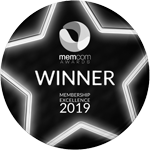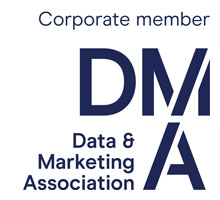2011 UK Census: Find out how it can benefit your business
Afternoon Seminar held on 4th July 2011
Seminar report by Barry Leventhal, Conference Chair
This is the third decennial Census for which the CGG has held a briefing seminar – our first such event was in June 1991, and ten years later a similar briefing was run following the 2001 Census. Arguably the 2011 seminar provided the best line-up of speakers and presentations.
The seminar was designed to provide an overview of key features and differences in the 2011 Census, as well as some of the applications of census data for business users. The main points from each presentation are summarised below.
Annette Dellevoet, Sainsbury’s
Annette gave an overview of the process that Sainsbury’s follow to forecast the performance of new sites, which involves running a gravity model and producing estimates based on analogue stores. She explained that census data is one of the inputs to both of these techniques, along with internal data and other government datasets. In summarising the value of using census data, Annette explained that, over the last two years, 70% of store openings have been areas outside Sainsbury’s traditional heartland, where few analogue stores were available. Therefore accurate estimates of ROI would not have been possible without good demographic data, and the cost of a poor location decision cannot be over-estimated.
Glen Watson, ONS
The 2011 Census Field Operation was overviewed in a very lively way by Glen Watson, Census Director for ONS. He described each stage in the process, starting from creation of an address register and then each field work phase through to non-response follow-ups and the Census Coverage Survey. Glen was confident that the Census response rate reached 94% nationally, and over 80% in every Local Authority. Overall, 16% of census returns were made online, with nearly 400,000 online completions on Census Day alone. Finally Glen identified the next processing steps – coverage adjustment and quality assurance – which should lead to first Census results being published in July 2012.
Martin van Staveren, Kantar Media
Martin gave a completely thorough and comprehensive presentation on the questions that were asked in 2011, the changes since 2001 and the variations between the four countries of the UK. He concluded that the Census provided a good harmonised set of questions across the UK, although users will still need to take account of some regional differences. Download Martin’s presentation for an excellent summary of this complex subject area.
Joe’s presentation provided a high-level overview on plans for 2011 Census Outputs. Joe delivered a review of the CGG / ACD report written following the 2001 Census – click here to download the report. He showed that all of the things that “went well” in 2001 (according to the report) had been maintained, while all of the things that “went less well” were being addressed (apart from the absence of income data). Joe finished by summarising work in progress on planning outputs and delivery mechanisms, and the likely running order of outputs.
Oliver O’Brien, UCL Centre for Advanced Spatial Analysis
Oliver showed a variety of excellent visualisation examples on Census data, featuring the Output Area Classification (OAC), the Index of Multiple Deprivation and work done on the 2010 US Census. He explained how the CensusProfiler visualisation tool overlays data onto maps, and presented a series of case study examples. Finally Oliver discussed future developments, including alternative techniques for mapping differences in spatial patterns over time.
Andrew Zelin, Ipsos MORI
Andrew presented a comprehensive review of the uses of census data in Market Research. He included applications for sampling, weighting and analysis of survey results. The Samples of Anonymised Records (SARs) were introduced, as a source of individual-level demographic data with opportunities for MR. Andrew discussed the ONS vision for users to create their own results from “hyper cubes” of aggregated data at Local Authority level and above. Finally, Andrew explained why census data is critical for MR users to conduct accurate work.
Get the latest MRS news
Our newsletters cover the latest MRS events, policy updates and research news.










